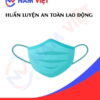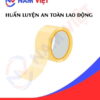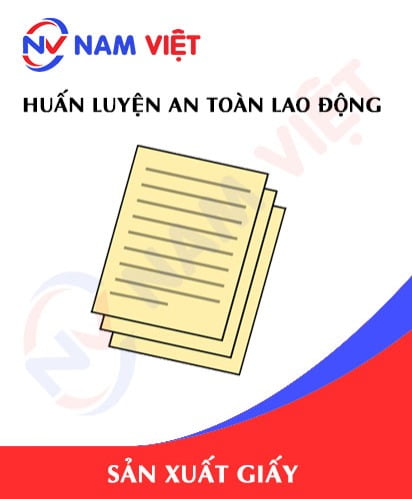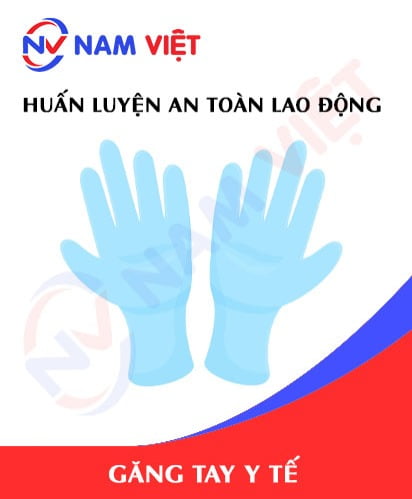Occupational safety training for coffee production
99,000 ₫
Note: The above price is calculated per person, the price may vary depending on the number of trainees participating in the course and market fluctuations. For more accurate pricing support, please refer to the quotation or contact our consultants directly.
Occupational safety is an important issue in coffee production factories and needs to be addressed promptly to ensure the health and safety of workers, and enhance the reputation of businesses. The Occupational Safety Training course is one of the effective solutions to raise awareness about how to prevent workplace accidents for workers participating in coffee production.
Table of Contents
Toggle1. Overview of Coffee
a. What is Coffee?
- Coffee is a beverage made from roasted and ground coffee beans, then brewed with hot or cold water to create a strong drink with a characteristic bitter flavor. Coffee is primarily grown in tropical countries and is produced and consumed worldwide. Coffee contains caffeine, a central nervous system stimulant, and has the effect of promoting alertness and reducing fatigue. Additionally, coffee is believed to have many health benefits, including reducing the risk of certain diseases and enhancing brain function. There are many different types and brewing styles of coffee, depending on the country, region, and personal preference.
- According to the 2020 Report from the Ministry of Agriculture and Rural Development, Vietnam produced about 1.61 million tons of coffee, an increase of 2.7% compared to the previous year. Furthermore, Vietnam surpassed Brazil to become the world’s largest coffee exporter in 2020, with a total coffee export value reaching over 3.5 billion USD.
- The main coffee-growing regions in Vietnam include the Southeast, Central Highlands, and Central Coastal provinces. Vietnamese coffee is primarily grown and processed using a natural method, where the coffee drying process is done on a sun-drying yard, instead of using industrial dryers. However, many Vietnamese coffee businesses are focusing on applying new technologies to improve coffee quality and increase production output.

b. Types of coffee production machinery
There are many types of machinery used in the coffee production process, including:
- Coffee roaster: A coffee roaster is used to roast coffee beans from green to a dark brown, helping to create the characteristic flavor and aroma of coffee. Coffee roasters come in many different types and capacities, from small roasters for households to industrial roasters for large-scale production.
- Coffee grinder: A coffee grinder is used to grind roasted coffee beans into fine powder for brewing. Coffee grinders come in many different types and sizes, from small grinders for a single cup to industrial grinders for large restaurants, hotels, and coffee production factories.
- Espresso machine: An espresso machine is used to press coffee, creating a strong espresso. Espresso machines come in many different types and sizes, from simple manual espresso makers to industrial machines with large capacity.
- Automatic coffee machine: An automatic coffee machine is used in coffee shops, restaurants, and hotels to brew coffee automatically. This machine can brew many different types of coffee, such as black coffee, cappuccino, latte, americano, espresso, and many others.
- Coffee washing machine: A coffee washing machine is used to clean coffee brewing tools, including cups, kettles, coffee machines, and espresso makers. This machine helps reduce the time and effort for the cleaning and maintenance process.
- Coffee packaging machine is a type of machine used to package coffee or coffee-related products, such as roasted and ground coffee powder, coffee beans, and filter bags. This machine is commonly used in coffee production factories to package products and preserve them for a long time.

c. Typical coffee production businesses
Vietnam is one of the world’s leading coffee producers and exporters, with many typical coffee production businesses, including:
- Trung Nguyen: The largest coffee brand in Vietnam, established in 1996 and headquartered in Ho Chi Minh City. Trung Nguyen produces and supplies roasted and ground coffee products, instant coffee, espresso, phin coffee, and many other products.
- Vinacafé: One of the oldest coffee production businesses in Vietnam, established in 1969 and headquartered in Ho Chi Minh City. Vinacafé produces and supplies roasted and ground coffee products, instant coffee, phin coffee, and many other products.
- Nestlé Vietnam: One of the leading companies in the production and supply of food and beverage products in Vietnam, with many famous brands such as Nescafé, Milo, KitKat, Maggi, and many other brands. Nestlé Vietnam produces and supplies instant coffee and espresso products.
- Highlands Coffee: A famous coffee brand in Vietnam, established in 2002 and headquartered in Ho Chi Minh City. Highlands Coffee produces and supplies roasted and ground coffee products, instant coffee, espresso, phin coffee, and many other products.
- Phuc Long is one of the famous coffee brands in Vietnam and has now become a well-known coffee chain in Vietnam. Phuc Long not only provides coffee brewing and retail services but also produces and packages roasted and ground coffee to sell on the market.

d. Specific jobs in a coffee production factory
Group 1
- Executive director, deputy executive director, department head in a coffee production factory.
Group 2
- Safety officer: manages safety in the factory, designs safety procedures, supervises and urges employees to comply with safe work procedures.
Group 3
- Material selection: Coffee production factories will select fresh, delicious coffee beans from different coffee-growing regions around the world, and ensure that the quality of these coffee beans meets the factory’s production standards.
- Coffee roasting: Coffee beans are roasted to remove the protective membrane and enhance the flavor and aroma of the coffee. The coffee roasting process depends on the type of roaster and the scale of the factory’s production.
- Coffee grinding: After roasting, the coffee beans will be ground into coffee powder for use in various coffee products.
- Coffee brewing: Coffee production factories will use coffee powder or roasted coffee beans to brew various types of coffee such as black coffee, milk coffee, cappuccino, latte, espresso, and many other products.
- Packaging and bottling: After roasting, grinding, and brewing the coffee, the product will be packaged into bags or boxes for retail sale or bottled for easy use.
- Quality control: The quality control process is very important in coffee production to ensure that the product meets quality and food safety standards. This process includes checking the flavor, aroma, moisture, and quality of the product.
Group 4
- Office work, service, sales, marketing.
- Production management, quality management, human resource management, material management, financial and accounting management.
- Research and development of new products, designing product packaging.
2. Overview of the occupational safety training course for coffee production
Within the scope of this article, we will focus on issues related to group 3, because group 3 is the group directly involved in the production process, and bears the highest risk of occupational safety. Learn more about other groups here
a. What is group 3 occupational safety training?
- Occupational safety training for group 3 consists of sessions that equip workers with awareness of how to prevent occupational accidents.
- The occupational safety training course will help workers identify and avoid dangers, and minimize the risks of occupational accidents during work.
REGISTER FOR OCCUPATIONAL SAFETY TRAINING SERVICES
b. Training duration
Initial safety training duration
- The total training duration is at least 24 hours, including the examination time.
- 8 hours of theoretical study on policies and laws regarding occupational safety and hygiene.
- 8 hours of theoretical study on basic knowledge of occupational safety and hygiene.
- 4 hours of theoretical study on specialized training content.
- 2 hours of practical training on specialized training content.
- 2 hours for the final theoretical test of the training course.
The safety training center will divide the time into several training sessions depending on the time arrangement for employees. But generally, there are 6 training sessions, and the course will last 3 days, provided that the production company can arrange continuous study time.
Periodic safety training duration
- Before the safety card expires, if the worker wants it re-issued, they must undergo a periodic occupational safety training course, with the periodic safety training duration being at least 50% of the initial safety training duration.
Explanation: The total duration of periodic occupational safety training is at least 12 hours, including the examination time. After completing the periodic training course and passing the test, the worker will be re-issued or have their safety card renewed.
c. Content of the training course
| No. | TRAINING CONTENT | TRAINING DURATION (HOURS) | |||
| Total | Of which | ||||
| Theory | Practice | Test | |||
| I | Policies and laws on occupational safety and hygiene | 8 | 8 | 0 | 0 |
| 1 | Overview of the legal documents system on occupational safety and hygiene. | 6 | 6 | ||
| 2 | System of standards and technical regulations on occupational safety and hygiene. | 1 | 1 | ||
| 3 | Specific regulations of state management agencies on occupational safety and hygiene when newly building, expanding, or renovating facilities, and for the production, use, storage, and inspection of machinery, equipment, materials, and substances with strict safety and hygiene requirements. | 1 | 1 | ||
| II | Basic knowledge of occupational safety and hygiene | 8 | 8 | 0 | 0 |
| 1 | Basic knowledge of dangerous and harmful factors at the workplace. | 4 | 4 | ||
| 2 | Methods to improve working conditions. | 1 | 1 | ||
| 3 | Safety culture in production and business. | 1 | 1 | ||
| 4 | Rights and obligations of employers and employees; policies and regimes on occupational safety and hygiene for employees; functions and duties of the occupational safety and health network. | 1 | 1 | ||
| 5 | Occupational safety and hygiene regulations, signs, safety and hygiene guides and the use of safety equipment, personal protective equipment; skills in first aid for occupational accidents, and prevention of occupational diseases. | 1 | 1 | ||
| III | Specialized training content | 6 | 4 | 2 | 0 |
| General knowledge about machinery, equipment, and substances that generate dangerous and harmful factors; analysis, assessment, and management of occupational safety and hygiene risks, safe working procedures with machinery, equipment, and substances with strict occupational safety and hygiene requirements. | 6 | 4 | 2 | ||
| IV | Occupational safety training test at the end of the course | 2 | 2 | 0 | 0 |
| Total | 24 | 22 | 2 | ||
See more training content for 6 groups
d. Occupational safety card
After completing the occupational safety training course and passing the test, the worker will be issued an occupational safety card (also commonly called a group 3 occupational safety certificate ).
The group 3 safety card will clearly show information such as: full name, date of birth, specific job and working environment. It also includes the training duration, a red seal, and a signature confirming the completion of the training course.
According to the regulations for issuing safety cards as specified in Clause 2 of Article 24 of Decree 44/2016/ND-CP, there are two cases:
- In the case where the employer and the employee have a labor contract with each other, the employer must sign, seal, and place an overlapping seal on the safety card for the group 3 trainee after they have completed the training course from the occupational safety training provider and passed the test.
- In the case of a freelance or seasonal worker who does not have a labor contract, the training provider must sign, seal, and place an overlapping seal on the safety card for the worker after they have completed the training course from the occupational safety training provider and passed the test.

3. Recognizing dangers in coffee production
Some of the dangers that can occur during the coffee production process, include:
- Due to the often large scale of coffee production at factories, the machinery in the factory can be dangerous to workers. Heavy machinery can cause accidents to workers, hot equipment can cause fires and explosions, and mobile equipment can cause injuries.
- Some chemicals used in the coffee production process can be harmful to health if not used correctly. For example, solvents, cleaning chemicals, or additives can be harmful to health if used improperly.
- The coffee roasting and brewing process uses high temperatures and pressure, which can be dangerous to workers if safety is not ensured.
- The coffee production process can generate waste such as coffee grounds, coffee husks, and coffee pulp. If not handled correctly, they can cause environmental pollution and harm human health.
- Coffee products can also be contaminated with bacteria or mold during the production or storage process. This can be dangerous to health if not strictly controlled.
4. Common occupational accidents in coffee production
Types of common occupational accidents that occur during coffee production can include:
- Injuries from machinery: The machinery in a coffee production factory can be dangerous to workers. This can include heavy equipment, hot equipment, cutting equipment, welding equipment, and other mobile equipment.
- Burns: The coffee roasting and brewing process uses high temperatures and pressure. If the necessary occupational safety measures are not followed, workers can get burned.
- Impact from chemicals: Some chemicals used in the coffee production process, such as detergents, disinfectants, or solvents, can cause toxic effects on human health.
- Scratches and cuts: Cutting equipment, knives, and blades are used to cut ingredients during the coffee production process. If not used correctly, they can cause scratches or cuts to the worker’s skin.
- Bacterial infections: The coffee production and storage process can cause infections to workers. This can include skin infections, diarrhea, or other infectious diseases.
5. Safety measures when participating in coffee production
To ensure the safety of workers in the coffee production industry, safety measures must be applied, including:
- Employees need to be fully trained in occupational safety on production procedures, occupational safety regulations, and safety measures when working with machinery and chemical substances.
- Employees need to be provided with personal protective equipment, including safety glasses, masks, protective clothing, gloves, and safety shoes to protect them from dangers during the production process.
- Coffee production equipment needs to be checked and maintained periodically to ensure safety during use.
- Chemicals used in the coffee production process need to be stored and used correctly. Employees need to be trained on chemical substances and safety measures when working with them.
- Occupational safety procedures need to be applied correctly and strictly followed throughout the coffee production process.
- Hygiene and quality control procedures should be implemented to ensure that coffee is produced in a clean environment and does not pose a health risk to consumers.
- Periodically organize work environment monitoring in factories and businesses, collect and analyze harmful factors for workers, and then adjust to reduce the level of harm to prevent occupational diseases for them.

6. Benefits of occupational safety training for coffee production
An Toan Nam Viet provides businesses with the following excellent benefits after completing occupational safety training courses as stipulated in Decree 44/2016/ND – CP regarding occupational safety and hygiene for companies, factories, and businesses.
- Workers can identify potential risks of occupational accidents and take preventive measures to avoid accidents.
- Businesses can establish risk prevention measures in production, operation, and maintenance processes.
- Minimize costs when safety risks occur in the workplace.
- The production process is not interrupted, which helps increase labor productivity and product quality.
- Comply with occupational safety laws, avoiding legal risks.
- Create prestige and professionalism in all aspects, thereby elevating the brand of your business.
The training courses of Nam Viet are a solution to prevent and combat external factors affecting each individual so they can avoid danger that can lead to injury or, more seriously, death.
REGISTER FOR OCCUPATIONAL SAFETY TRAINING SERVICES
7. Customer feedback after completing the occupational safety training course for coffee production
An Toan Nam Viet has many years of experience in the mission of accompanying many businesses in Vietnam in general and in the southern provinces in particular. And that responsibility is something extremely valuable to Nam Viet, which is why Nam Viet’s Occupational Safety Training work is always focused on becoming more professional. The motivation for An Toan Nam Viet to grow strongly to the present day comes from the positive feedback and suggestions from businesses. Below is the feedback from our partners whom we have served.
Bac Nam E&C Construction Investment Joint Stock Company
“The first time I used the service at An Toan Nam Viet, I was very surprised by the enthusiastic 24/7 support of the team of consultants. The class organization was very quick and convenient for our company; thank you very much for Nam Viet’s service!”
Hoa Dat Construction and Trading Joint Stock Company
“Nam Viet’s service has helped us a lot in simplifying occupational safety and completing safety files for our work process. The team of consultants is enthusiastic and timely in answering our questions. 5 stars for Nam Viet”
See more customer interviews after using An Toan Nam Viet’s services
8. An Toan Nam Viet’s Occupational Safety Training Capability
An Toan Nam Viet is a reputable and high-quality occupational safety training center in Vietnam today. With occupational safety training sessions continuously held at production workshops, factories or construction sites across the country (63 provinces and cities in Vietnam).
REGISTER FOR OCCUPATIONAL SAFETY TRAINING SERVICES
License for occupational safety training
- An Toan Nam Viet has been inspected and granted a certificate of eligibility to operate occupational safety and hygiene training by the Department of Labor Safety of the Ministry of Labor – Invalids and Social Affairs. This further strengthens our capability to provide occupational safety training.

Documents and lectures
- Before occupational safety training documents are included in occupational safety training courses, they are reviewed and approved to ensure that the lectures are factually correct and effective when applied.
- The teaching method of our lecturers is synchronized according to the teaching standard of An Toan Nam Viet, which is a method that experts in occupational safety and hygiene training have researched and distilled during the teaching process to bring the highest level of knowledge absorption to students.
Facilities
- Controlling the factors in the classroom that affect the training process will increase teaching efficiency and the effectiveness of knowledge absorption for students.
- Our facilities supporting the training course always have spacious classrooms that meet standards for area, lighting, training equipment … etc…
9. Reputable and high-quality national safety training center
At An Toan Nam Viet, we always prioritize our professional dedication to occupational safety training. For us, imparting knowledge of self-protection to workers so they are safely equipped on their livelihoods is a contribution to building the country.
To ensure effective training, we prepare carefully and meticulously for every little detail, no matter how small. From preparing tools, equipment, teaching aids to curricula, documents, sound, and lighting.
Our occupational safety trainers are experts with many years of experience in the field. They even have research on identifying dangers in all occupations and how to prevent them.
The trainers’ lectures are distilled from practical experience and conveyed in the most vivid and easy-to-visualize way for workers. These factors help workers feel comfortable during their study time and absorb our teaching knowledge well. Of course, the knowledge conveyed always closely follows Decree 44/2016/ND-CP.
From there, they grasp many measures to prevent dangers and how to protect themselves. At the same time, they can apply it in the most appropriate way in their actual work.
Our safety training center is proud to be a reputable and professional provider of occupational safety training services with the following advantages:
- Competitive training costs but training quality is still guaranteed.
- Flexible training schedule adapted to the company’s production situation.
- Quick occupational safety training certification procedures, in accordance with the law.
- Trainers are people with many years of experience in the profession.
- The classroom is controlled for factors affecting the training process, increasing teaching efficiency and the effectiveness of knowledge absorption for students.
- The lectures are compiled to be suitable for occupational safety work at businesses.
- An Toan Nam Viet works with dedication and professionalism to support customers accurately and quickly.

10. Reference more occupational safety training documents for coffee production
- Occupational safety documents for soy sauce production
- Occupational safety training document set
- Occupational safety training test question set
- Multiple-choice test for occupational safety in soy sauce production
- Lecture slides for occupational safety training in soy sauce production
1 review for Occupational safety training for coffee production
No comments yet















namchinh.haiphong341
Tôi rất hài lòng khi lựa chọn trung tâm nhé